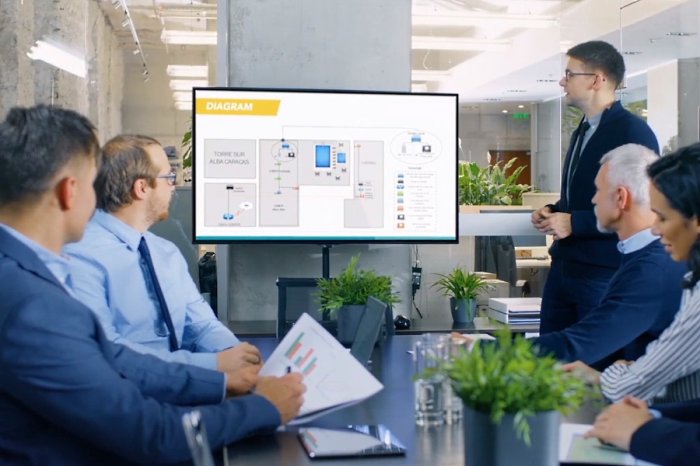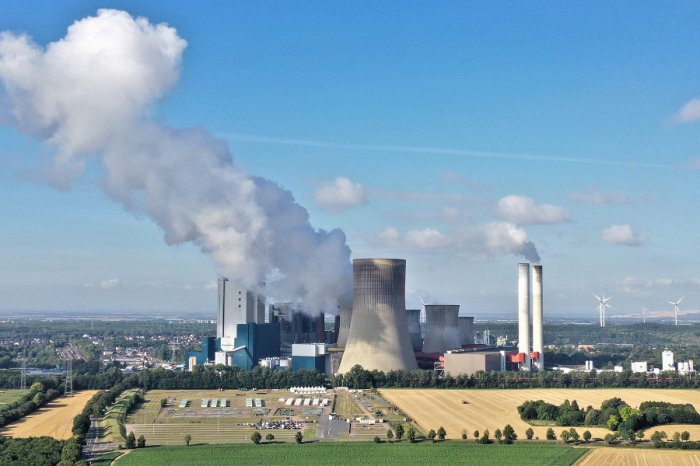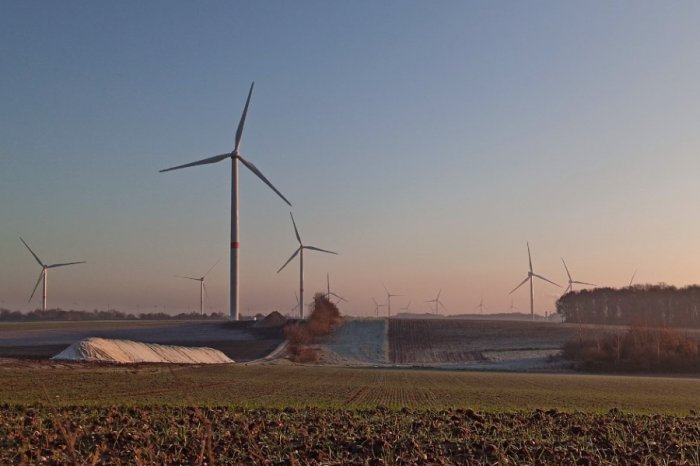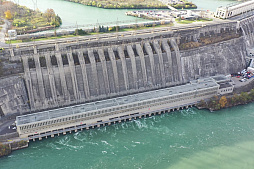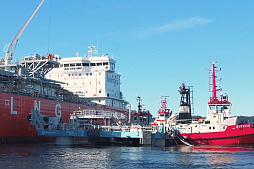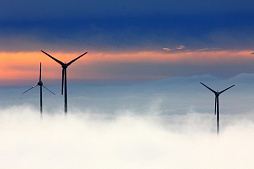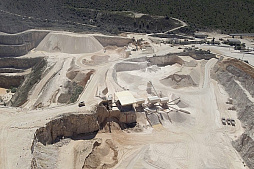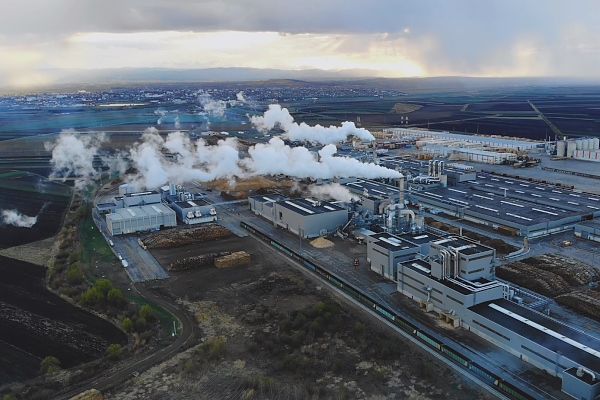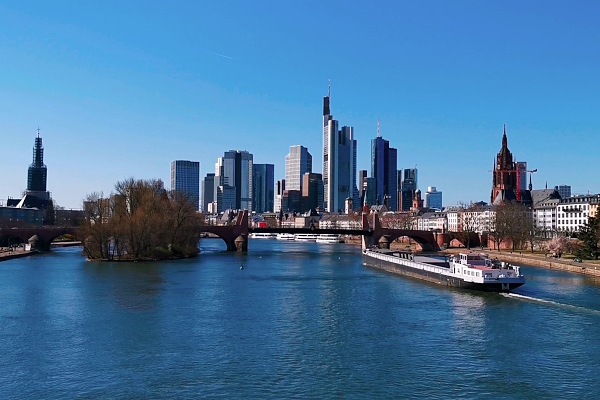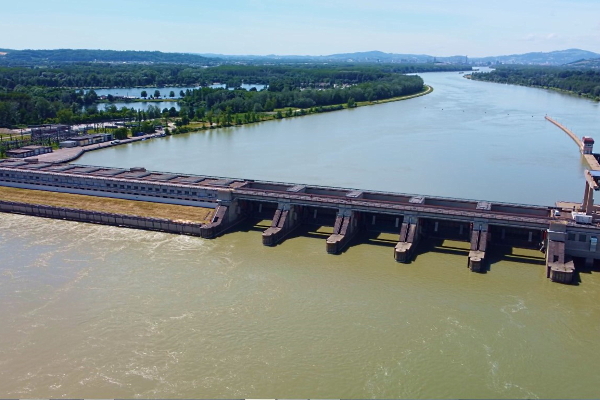After receiving the necessary documents and project presentation, our team will try to review your request as soon as possible, and leading experts will offer the best options for project funding.
In project finance, the financial structure is designed to be a “standalone” entity separate from the sponsors, and the project's future cash flow and assets are used as collateral to secure financing. New global trends in project finance help mitigate the risks and attract funding from various sources, including banks, private investors, and financial institutions.
The significance of project finance in global economic development lies in its ability to facilitate the implementation of complex and capital-intensive projects that may otherwise be challenging to fund through traditional financing methods. Key features of project finance include risk allocation, where risks are assigned to the party best equipped to manage them, and a focus on the project's future cash flows rather than the creditworthiness of the project sponsors.
This approach allows for the realization of essential infrastructure, energy, and other development projects, contributing to economic growth, job creation, and improved living standards on a global scale.
Project finance actively supports important initiatives ranging from major transportation and electrification projects to social infrastructure and sustainable development initiatives.
Brief overview of current trends in project finance
Last decade marks a pivotal juncture in the trajectory of large project financing, as stakeholders navigate a terrain defined by environmental imperatives, technological disruptions, and an intricate net of economic interdependencies.From renewable energy sector facilities to digital infrastructure projects, the global stage is witnessing a confluence of trends that not only redefine traditional financing models but also reflect a broader commitment to sustainability and innovation.
In this exploration of current global trends in project finance, we must unravel new forces steering the area. From the dominance of renewable initiatives to close integration of Environmental, Social, and Governance (ESG) considerations, this chapter seeks to provide insights into main drivers and transformative shifts influencing project finance practices on a worldwide scale. We must consider innovative financial models, changes of regulatory landscapes, and technologies, to decipher the mosaic of trends shaping the future of project finance in rapidly changing business world.
Below we have listed some global trends in project finance that have become important by 2024.
Trend #1 Renewable energy dominance
Continued growth in project finance is now especially important for huge renewable energy projects (solar power plants mainly in Asia, Africa and Latin America, wind parks around the world, as well as geothermal projects in seismically active regions), with a focus on solar and wind. In the last few years increasing interest in “energy storage projects” (for example, pumped storage power plants) to address intermittency challenges associated with renewable sources.Trend #2 Sustainability and ESG integration
The intersection of sustainability and project finance has become a characteristic feature of the contemporary international business landscape. There is a growing emphasis on Environmental, Social, and Governance (ESG) considerations in project finance.These considerations have already transcended mere corporate responsibility to emerge as critical factors influencing decision-making. This integration is reshaping the project finance landscape in numerous profound ways. Integration of sustainability principles in project design, execution, and reporting is currently important to meet global ESG standards.
Trend #3 Digital transformation of project finance
This means adoption of digital technologies, including blockchain and artificial intelligence, advanced FinTech solutions, using remote collaborative platforms and enhanced data analysis for better project efficiency and risk management. The digital transformation reflects a paradigm shift in the financial industry, promising increased return on capital, transparency, and adaptability.As technologies continue to evolve, project finance stakeholders must navigate the opportunities and challenges presented by this transformative trend to stay competitive in the dynamic landscape.
Trend #4 Resilience planning
There is also heightened focus on resilience in project design and financing structures to address unforeseen challenges, such as pandemics, climate events, and geopolitical uncertainties. Resilience planning in project finance signifies a strategic approach to anticipating, preparing for, responding to, and recovering from unforeseen challenges and disruptions.Trend #5 Infrastructure development in emerging markets
Infrastructure development in emerging markets represents a profound shift in global economic dynamics. It signifies a concerted effort to address the burgeoning demand for modern amenities, connectivity, and sustainable urbanization in regions characterized by rapid demographic growth. Furthermore, infrastructure development in emerging markets is not merely a utilitarian approach.This paradigm encompasses a holistic approach that prioritizes projects addressing fundamental needs such as energy, water supply, sanitation, and transportation. By focusing on creating critical infrastructure, these initiatives aim to enhance the quality of life for local populations.
Trend #6 Transition to hydrogen economy
The global trend towards a hydrogen economy marks a significant shift in the energy landscape, emphasizing the role of hydrogen as a clean and versatile energy carrier. This transition involves the production, distribution, and utilization of hydrogen as an element in the decarbonization of various sectors, including industry, transportation, and energy storage.As a zero-emission fuel, hydrogen is gaining traction as a viable solution to address environmental concerns and meet ambitious climate goals, with investments and large projects focusing on green hydrogen production methods to ensure sustainability and reduce carbon footprints.
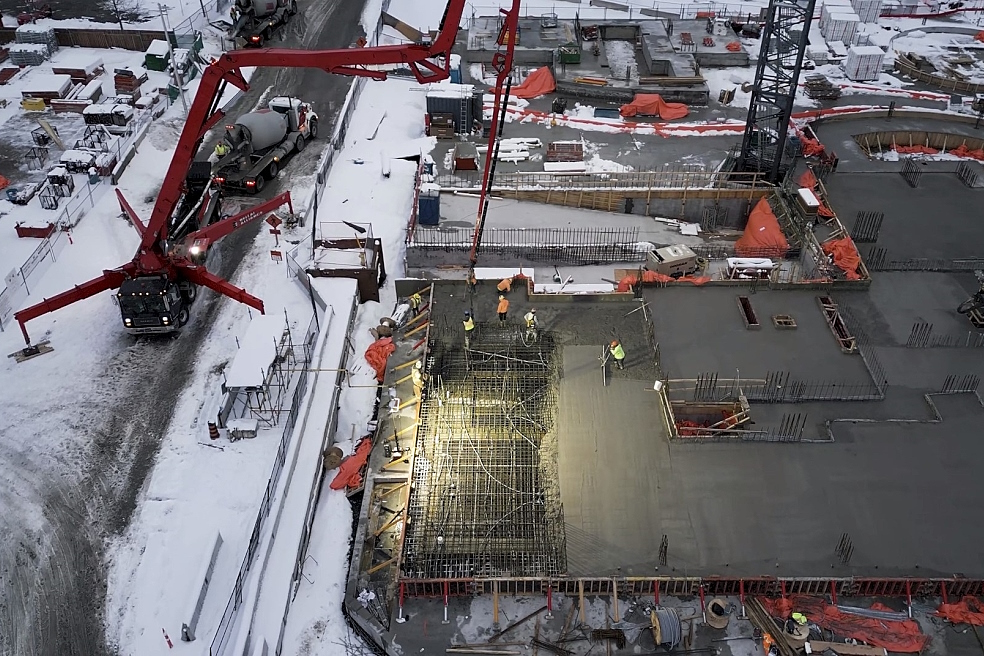
Trend #7 Adaptation to regulatory changes
The global trend of adaptation to regulatory changes in project finance underscores the industry's responsiveness to a continually evolving legal landscape. With an increased emphasis on environmental sustainability, social responsibility, and transparency, project financiers are navigating a complex net of regulations worldwide.This trend necessitates a comprehensive approach, integrating regulatory compliance considerations into every stage of project development. From conducting deep environmental impact assessments to addressing social governance criteria, project financiers are proactively incorporating regulatory requirements into their planning and execution strategies.
This adaptability not only ensures legal compliance but also mitigates potential risks, enhancing project resilience in the face of changing governmental policies and regulations. As regulatory frameworks continue to evolve, the ability to adeptly navigate and incorporate these changes is becoming a hallmark of successful and sustainable project finance initiatives.
Trend #8 Innovation in financing models
Innovation in financing models is reshaping the landscape of project finance, introducing creative and adaptive approaches to fund large-scale initiatives. Traditional funding is being complemented by emerging models such as crowdfunding, peer-to-peer lending, and digital securities issuance.This trend reflects a dynamic shift towards diversification in funding sources, providing project stakeholders with more flexibility and efficiency in securing capital. As the financial ecosystem continues to evolve, the exploration and implementation of innovative financing models are becoming integral to fostering resilience and adaptability in large project financing.
Role of project finance in funding large-scale projects
In essence, project finance serves as a pillar in funding large-scale infrastructure and development projects by providing a flexible and collaborative financial structure.Its role extends beyond mere funding, influencing the project success, overall economic impact, and contribution to sustainable development goals. As the global demand for transformative projects grows, PF continues to be a vital enabler of progress on an international scale.
Project finance plays a crucial role in funding large-scale energy, industrial, infrastructure and development projects, offering a tailored financial structure that addresses the unique challenges associated with these ventures.
Below is discussed its role in large-scale projects.
Customized financing structures
Asset-backed financing is critical for capital providers when it comes to high-value investment projects that require significant funds in the early stages and involve significant risks.Project finance structures are designed to be asset-backed, meaning the project's assets and future cash flows are used as collateral. This provides reliable layer of security for lenders and investors, making it an attractive form of financing for projects with long payback periods.
Strategic risk allocation
Effective risk mitigation is another important feature of this approach to financing capital-intensive initiatives. Risks inherent in large-scale investment projects, such as construction delays, regulatory changes, or significant cost overruns, are systematically assigned to the party best equipped to manage them.This risk-sharing mechanism enhances the resilience of the project.
High financial flexibility
Large-scale investment projects often require substantial funding that may not be available through traditional financing methods. Project finance offers scalability, allowing the financial structure to be tailored to the specific needs and size of specific project. Exceptional flexibility accommodates the capital-intensive nature of major infrastructure initiatives.Involvement of diverse stakeholders
The use of project finance schemes involves the construction of an integrated structure with the participation of several stakeholders.The main role is played by banks and financial institutions as lenders, providing the necessary capital for the project. PF models often involve private investors, such as equity funds and institutional investors, looking for long-term, stable returns. Finally, one of the pillars of any investment project are sponsors, the entities initiating the project actively participate in securing financing and managing the project throughout its life cycle.
Highly-effective collaborative models
Project finance often involves collaborative models like Public-Private Partnerships (PPP), where the public and private sectors join forces. This collaboration not only brings together different skill sets but shares the financial and operational responsibilities, fostering efficient project execution.Creative financing strategies
Build-Operate-Transfer (BOT) plays a critical role in the implementation of certain types of projects, including socially significant ones. In BOT arrangements, private entities finance, design, build, operate, and maintain the infrastructure project for a specified period. After this period, the ownership is transferred back to the public entity. This creative financing strategy helps address the capital-intensive nature of major projects.Economic and social development
PF initially did not play a priority social and economic role, but in the last decade this can truly be called a key global trend in project finance.Large-scale projects funded through project finance encourage job creation, generate employment opportunities, contributing to local and regional economic growth. These projects actively stimulate economic activity beyond the construction phase, benefiting related industries and services.
Project finance enables the integration of sustainable practices, aligning projects with environmental and social responsibility goals.

Factors influencing project finance in different parts of the world
Economic, political, and regulatory factors play a crucial role in shaping project finance trends across different parts of the world.Below is an analysis focusing on major countries and regions.
Table: Factors influencing project finance trends worldwide
| Country / Region | Main factors | Brief description |
| United States | Overall state of American economy | In the United States, project finance is depend on the overall economic climate, including interest rates, inflation, and GDP growth. The stability of the U.S. economy attracts huge investments. |
| Political climate | Political decisions and policy changes, especially in energy and infrastructure sectors, have strong direct impact on project finance trends. Regulatory frameworks and tax incentives also shape the investment landscape. | |
| Regulatory dynamics | Complex legal and regulatory environment, including environmental regulations and permitting processes, significantly influences project timelines and capital structures of capital-intensive projects. | |
| European Union | Economic integration | Economic factors within the EU, such as monetary policies and economic integration, influence cross-border project financing. The Eurozone's economic conditions play a role in attracting investments. |
| Political collaboration | Political collaboration among EU member states impacts project finance effectiveness, particularly in large infrastructure projects that involve multiple countries. Brexit has also introduced new dynamics in cross-border financing. | |
| Harmonization of European legislation | European efforts towards regulatory harmonization, particularly in sustainable finance practice and ESG considerations, influence project finance. | |
| China | Economic policies | China's economic policies, including huge infrastructure development plans like the Belt and Road Initiative, heavily influence project finance. State-led financing mechanisms play a great role. |
| Party decisions | Political decisions and strict state control over key sectors impact project financing. The government's commitment to certain industries shapes investment trends over the decades. | |
| Unique regulatory environment | The regulatory environment in China, with a focus on foreign investment rules, innovations and environmental regulations, affects the structure and feasibility of numerous projects. | |
| Middle East (GCC) | Dependency on oil | Economic factors in the Gulf Cooperation Council (GCC) countries are tied to oil prices, impacting project finance trends. Diversification efforts and non-oil sector investments are key considerations. |
| Political stability | The political stability of each GCC country influences investor confidence and project feasibility. Political decisions on infrastructure and energy projects are critical. | |
| Legislative reforms | Ongoing regulatory reforms, including public-private partnership frameworks, influence project financing structures and attract foreign investment. | |
| Africa | Rapid economic development | Economic conditions and development initiatives influence project finance in Africa. Infrastructure projects, in sectors like energy and transportation, are central to economic growth. |
| Political stability and governance | Political stability and governance issues impact investor confidence. Countries with stable political environments attract much more funds. | |
| Changing regulatory frameworks | The regulatory landscape, including legal and permitting processes, affects the ease of doing business and shapes project financing trends. |
Among the most capital-intensive projects that could benefit from the use of PF tools, we can name DEWA CSP Project (UAE), Vineyard Wind Farm (United States), Transnordestina Railway Project (Brazil) and many others. Large initiatives in energy sector, industry and infrastructure may involve a combination of government funding, international financial support, and potentially project finance schemes for specific components.
Understanding the nuances of economic, political, and regulatory factors in host country is crucial for project financiers, investors, and policymakers to navigate the complex and dynamic landscape of global project finance.
It's essential to consult with experts and refer to current reports, analyses, and official government publications for the most accurate information.
GCAM Investment Group is ready to provide you with comprehensive support when planning large investment projects, developing financial models, attracting long-term capital or bridge financing, project management, etc.
Contact us.




